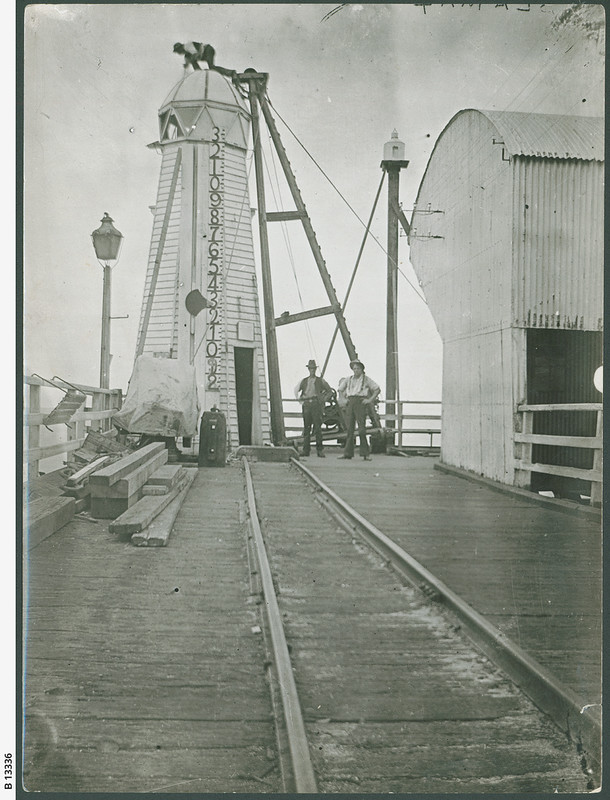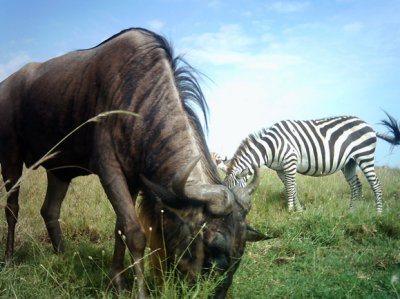Let's examine some common open science outputs with examples from citizen science.
The types of data collected are just as diverse as citizen science projects themselves. Citizen science data are highly variable in quantity and quality, from air quality measurements, wildlife observation records, to astronomical photography or everything else in between. This of course also includes qualitative data such as interview transripts. Whatever data your citizen science project produces, it is the result of the tireless contribution by citizen scientists and is highly valuable. Therefore, don’t just keep your data on paper or as a set of spreadsheet files on your computer! Publishing the data and allowing others to learn from and build upon it is crucial to doing good science. It’d be a great shame to lose data, which might be useful to others in ways you can’t imagine right now. Here is an example.

Photo of a tide guage from 1912 by City of PAE Libraries, from Flickr, CC BY 2.0
Sea level rise due to climate change could affect 28% of the world’s population who live near the coast [1]. The UK Tides project, hosted on the Zooniverse platform, is enlisting the help of citizen scientists to digitise tide records scanned from ledgers dating back to the 19th century. This type of data helps scientists understand how much sea levels have risen over the past century [2]. The effort is possible because the original data in these ledgers have been archived and made available for others to learn from, even if the original recorders didn’t have climate change in mind when they measured the tide levels! Truly a great example of old data finding new life.
When thinking about the outputs of a citizen science project, data or papers are often what first comes to mind. However, a citizen science project produces so many outputs, and they should all be published as open science outputs. They range from outreach or education material, audio and videos, lab notebooks, or even meetings notes, blog posts, or social media activity. Also remember that outputs are generated not by just the leaders of a project, but all participants.

Photo of zebra and wildebeest from Snapshot Safari Educational Materials, CC BY 4.0
Snapshot Safari is a contributory citizen science project where participants help classify wildlife images taken across Africa. They have published their dataset of millions of wildlife photos. On top of that, Dr Jessica Dewey created a set of educational materials for students to learn about African wildlife and engage with Snapshot Safari as citizen scientists [3]. Take a moment to visit the following link to see how this open educational resource (OER) was published, and what it contains: Snapshot Safari Educational Materials.
Why publish so many things?
Recall that open science is not just about the final outputs at the end of a project, it is also about the process. By publishing the full spectrum of outputs from your citizen science project on an ongoing basis, you are archiving the scientific process. Even if that includes mistakes and blemishes, those are sometimes the most valuable things that you and others can learn from. And when you make your work available, not only can others build on it, but they could also help you. For example, open educational resources can be adapted by a teacher to suit their curriculum; a blog post can be translated into another language by a volunteer; someone might help add subtitles to your project video to make it more accessible. In a sense, these people are all citizen scientists contributing to or building on your project in ways beyond data collection and processing.
Also remember that for many people, participating in your citizen science project is their first introduction to doing science. Therefore it is crucial to share with citizen scientists the understanding that doing open science is how to do good science.
What are the outputs from your citizen science project (or one you wish to start)? How might people openly collaborate?
1. Pörtner, H.-O., Roberts, D.C., Masson-Delmotte, V., Zhai P., Poloczanska E., Mintenbeck K., Tignor, M., Alegría, A., Nicolai, M., Okem, A., Petzold, J., Rama, B., Weyer, N.M. (eds.), 2019. IPCC, 2019: Technical Summary. In: IPCC Special Report on the Ocean and Cryosphere in a Changing Climate In press. Available from: https://www.ipcc.ch/srocc/chapter/technical-summary/
2. Bradshaw, E., Rickards, L., Aarup, T., 2015. Sea level data archaeology and the Global Sea Level Observing System (GLOSS). GeoResJ, 6, 9–16. https://doi.org/10.1016/j.grj.2015.02.005
3. Palmer, M. S., Dewey, J., Huebner, S., 2020. Snapshot Safari Educational Materials. Retrieved from the Data Repository for the University of Minnesota, https://doi.org/10.13020/5r00-8c56